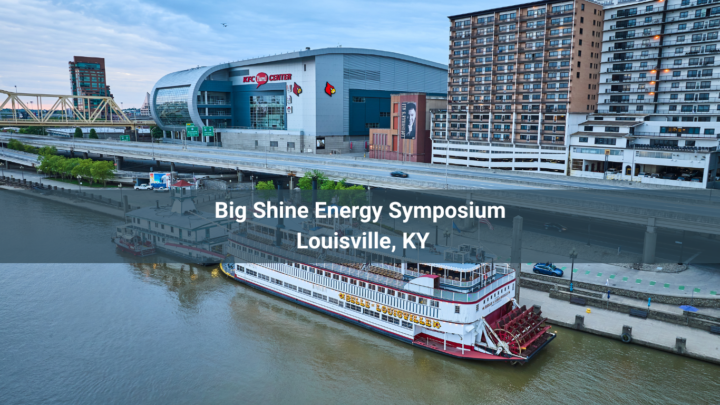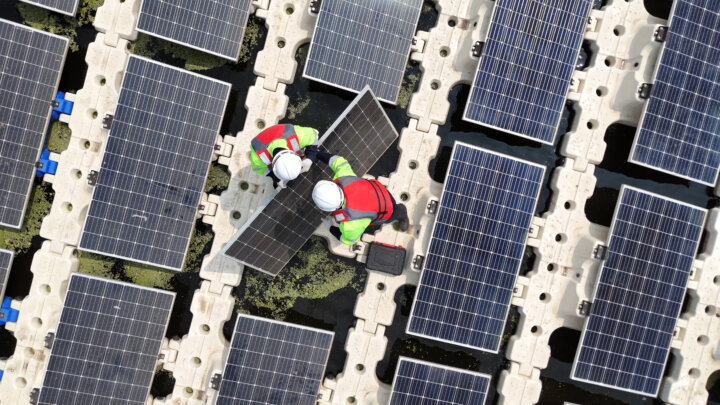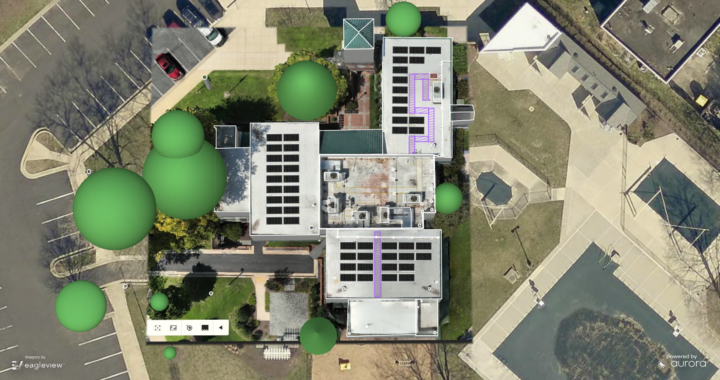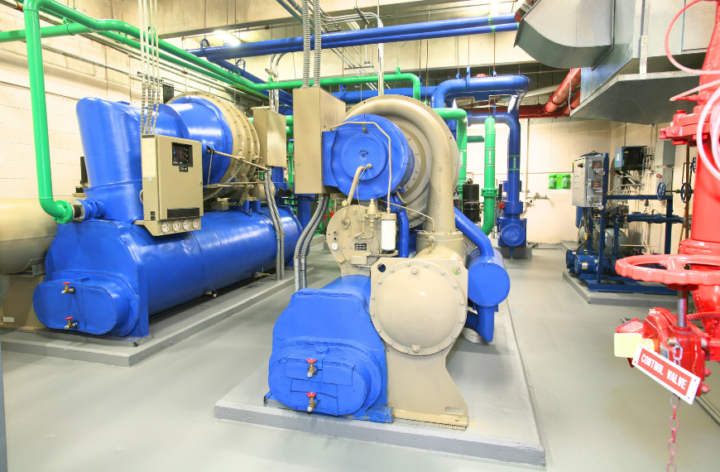LED fixtures are famous for long life. If properly maintained and supplied with the right environment and a clean power supply, the LED chips and the electronic driver can last well beyond 50,000 hours. However, it is important to remember that our building environment may be changing. If we allow unfavorable conditions to persist, the life of the fixtures can be drastically reduced. Some of the problems we face today are due to the pandemic and to new weather extremes which weren’t anticipated even a few years ago. More often, though, we overlook fundamentals of maintenance for our building and for our electrical system, and these can affect every electronic device we rely on, including our LED lights.
This article will briefly explain the conditions that are hostile to LED Lighting. We outline the signs that tell us when cleaning or basic maintenance is required. The primary culprits are 1) temperatures above the fixture’s operating rating; 2) dust build-up on the fixture driver and heat sink; 3) exposure to cleaning and disinfecting chemicals; 4) bad power quality; 5) poorly maintained electrical grounding. Let’s examine each condition and review the maintenance steps we can take to extend the life of our fixtures.
1. Temperatures Above The Fixture’s Operating Rating
Heat affects the life of the LED emitters (‘LED chips’). It also affects the life of the electronic components inside the AC-to-DC power supply for the fixture. This power supply is called the “driver” because it provides the carefully regulated DC current which drives the LED chips to emit light. If the chips are operated above their rated temperature, they will change color and become dimmer. This reduced light output is known as ‘lumen depreciation’. In a similar way, the components inside the driver are affected by excessive heat. As an example, if the life of a driver is 50,000 hours at its rated temperature, operating the driver at 10° C above its rated temperature will cut its life in half.
An important point is that the operating temperature of the fixture is the temperature of the air directly surrounding the fixture driver and heat sink. In high ceiling facilities, the air at the peak of the ceiling can easily be 10° C (18° Fahrenheit) higher than the temperature we sense at ‘people level.’ This is due to an effect called ‘air stratification’; the hot air rises and tends to stagnate at the top of the ceiling. Drop ceilings can be a problem, even though the ceiling is lower, due to restricted air flow, narrow spaces, and insulation.
The best way to check is to install a simple temperature alert sensor next to a fixture at the highest point. This sensor will email an alert whenever the temperature exceeds the allowable limit. If this happens, it’s not necessary to immediately turn off all the lights, rather it’s a sign that some simple changes are needed because of stratification. The controls can be used to reduce power to the fixtures during excess temperature events, if the fixtures are dimmable. If alerts happen frequently, it’s a sign that the building needs de-stratification fans. Properly used, these not only help fixture life but also save money on heating costs.
2. Dust Build-Up On the Fixture Driver and Heat Sink
Even if the operating temperature is being maintained within proper limits, if there are dust and particulates in the air, over time these will settle on the driver and its heat sink, creating a blanket effect. A thin layer of dust can reduce heat transfer into the air by a surprising amount. We may think that our facility has very clean air, but we have seen fixtures from tennis domes with the lens and heat sink coated with ‘tennis ball fuzz’ which baked on. The fuzz tended to collect over the warmest spots on the fixture, the very places where heat transfer is needed the most. It’s important to periodically inspect the top of the fixtures for dust buildup, and to remove the dust by vacuuming or careful wiping.
3. Exposure to Cleaning and Disinfecting Chemicals
Disinfection has always been a part of routine building maintenance, but this has taken on a new emphasis since the pandemic began. Most facilities are now regularly spraying down surfaces with various types of disinfectants. LED lighting is sensitive to the chemicals in the air, most especially if the chemicals include chlorine or sulfur compounds. Chlorine and sulfur attack the phosphor coating on the LED chips and the tiny connecting leads, causing a rapid color change and lumen depreciation. In time the damage results in total failure of the chips.
These same compounds, and some other chemicals such as alcohols and amines, also attack the polycarbonate lens. The lens will soon develop hairline cracks which allow moisture and chemicals easy access into the LED compartment. If the fixtures had a high “IP” (Ingress Protection) rating for use in moist or wet environments, they completely lose their IP rating after the lenses develop cracks.
For fixtures with an IP Rating of IP65 or higher, gently wiping or misting the lens with distilled water after disinfection may help reduce the effects of disinfectant exposure. It’s important to remember that the IP rating defines the fixture’s resistance to entry by particles, dust or liquid water. A high IP rating does not guarantee that the fixture is ‘gas-tight’, meaning that corrosive gas molecules may still enter the fixture over time depending on the concentration.
If the facility HVAC system is mixing adequate make-up air from outside this measure will sometimes suffice. Some manufacturing facilities may have solvents, machining mists or other volatiles continuously in the air. Indoor pools and spas having strongly chlorinated water will form chloramine gasses when perspiration from pool users mixes with the pool water. In environments such as these, frequent inspection is called for, and enhanced cleaning cycles may be necessary to preserve the life of the fixtures.
4. Bad Power Quality
Power Quality Disturbances
Every facility has some level of power quality disturbance. The AC electrical power in our buildings should look like a perfect sine wave if we view the voltage waveform with a special high-speed meter or oscilloscope. Typical electrician’s voltmeters only display an average of the RMS voltage one time or a few times per second. To visually detect power quality problems, we need to sample the power many thousands of times per second. When we do so we may spot problems such as harmonic distortion, ring transients and impulse transients.
When everything seems to be working OK with the building as it is, it’s easy to assume that the electrical system is fine. Neglecting to check exposes us to several risks. For example, traditional lighting such as metal halide and fluorescents operate by applying high voltage to create a mercury vapor arc inside the tube or bulb. Because of the way they operate, these lights are not very sensitive to power quality disturbances.
Precision Electronic Driver
In contrast, LED lighting requires a precision electronic power supply called a “driver”. The driver, and the LEDs themselves, must be protected from voltage spikes and other disturbances. This is accomplished by surge protection devices (SPD) which become conductive when voltage exceeds a pre-set threshold. To divert the voltage spike away from the driver, the SPD must be connected to a low-resistance path to ground. Here, ‘ground’ means literally to the ground around the foundation of the building.
LED fixtures have a modest-capability SPD built into the driver. There isn’t space in the driver for a large capacity SPD. Modern building electrical systems are meant to have heavy duty SPDs upstream of the branch circuits that supply power to the individual fixtures. The upstream surge protection devices are designated Type 1, located in the main electrical panel, and Type 2, located in each sub-panel which supplies branch circuits. Type 2 SPDs are especially critical as they not only block residual voltage spikes coming from outside the facility, they also filter out impulse and ring transients that are created inside the building, often by other loads on the same panel.
Sources of Transients
Common sources of transients are HVAC systems, especially those with variable speed fans and drives, elevators, compressors, hydraulic pumps, packaging machines and waste compactors. Exterior fixtures are fed by long runs of unshielded or partially shielded wire. This means any nearby electrical storm can induce large voltage surges. Supplemental Type 4 SPDs are often needed for exterior lighting or inside industrial buildings with heavy machinery, welding machines and the like.
5. Poorly Maintained Electrical Grounding
Maintenance needs related to power quality include an annual testing of the resistance to earth ground. The resistance to earth ground, from fixture/equipment to the building grounding electrode, can increase with age, corrosion, system modifications or damage. Some types of grounding electrodes have a life of only 15 years or less depending on soil conditions, and deep freeze or drought conditions drastically increase the resistance. The National Electrical Code specifies a maximum year-round ground resistance of 25 Ohms (a standard developed in the 1930’s, before today’s electronics), and both the NFPA and IEEE recommend less than 5 Ohms for modern computer and electronic equipment, including solid-state LED lighting.
Even the best combination of Type 1, 2 and ¾ surge protection is rendered ineffective if the building grounding fails. The great benefit of maintenance checks of our building earth grounding is that we are also ensuring a key system needed for life safety and fire safety. After any additions or modifications to the facility electrical system, a trained electrical inspector should verify that neutral and ground are connected where they should be, and are not connected where they never should be. We have observed a shockingly high number of commercial, sports and industrial buildings with improper neutral-to-ground connections, which is a code violation and a serious safety hazard.
Conclusion
We want to emphasize that the maintenance steps outlined in this article should only be performed by properly trained and equipped maintenance staff. Any work being performed on or around lighting fixtures may involve working at heights on ladders or lifts. The staff must be trained and experienced in luminaire electrical systems and controls. Any inspection or work performed inside of electrical devices and panels requires special training and personal protective equipment (PPE). The NFPA 70E manual is an excellent reference and standard for Electrical Safety in the Workplace.
We at Big Shine Energy are your partners for Sustainability Excellence. We can’t cover every possible scenario in the article, so we invite you to contact us whenever a question of fixture selection, application, installation or maintenance comes up. LED Lighting is truly the low-hanging fruit of sustainability savings, and our goal is to make sure you get the longest life and the most satisfaction from your LED lighting upgrade. Your facility will not only have bright, crisp illumination, you will greatly reduce your carbon footprint. LED lighting pays for itself in only 2 to 5 years. When you get the full life of your LED lighting the total savings are, well, WOW!!!
